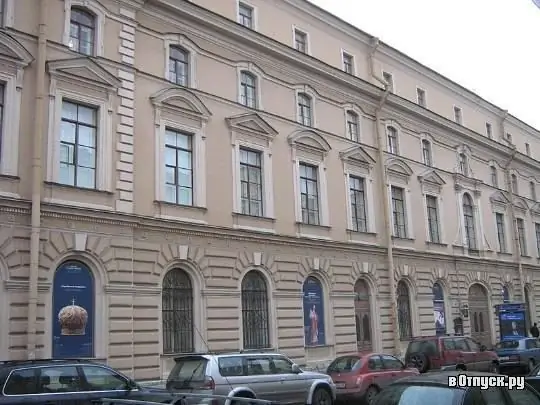
Description of the attraction
The State Museum of the History of Religion is the only one in Russia and one of the few museums in the world, whose expositions present the history of the origin and formation of religion. The museum funds number almost 200,000 exhibits. This includes historical and cultural monuments from different countries, different eras and peoples. The most ancient exhibits of the museum collection are archaeological finds that date back to the 6th millennium BC.
In 1930, an anti-religious exhibition was opened in the halls of the Winter Palace, which formed the basis of the museum's exposition. The museum was founded on the initiative of the outstanding Russian historian, ethnographer and anthropologist V. G. Bogoraz-Tana, who became its first director. In 1932, namely on November 15 in the building of the Kazan Cathedral, this museum was solemnly opened, in 2000 it moved to a specially equipped new building.
The building of the museum, located in the historical part of the city, was built in the 1860s. the architect of this building is A. Kavos. It houses permanent exhibitions, the Silver Pantry open storage fund, and temporary exhibitions. The Open University of the History of World Religions operates at this museum.
By 1941, a huge collection of exhibits was concentrated in the museum's funds, which reflected the diversity of religions. For example, a collection of Orthodox icons of the 17-20 centuries, objects of fine, as well as decorative and applied art, which reflected the history and culture of Eastern and Western Christianity, Buddhism and Hinduism, the beliefs of the peoples of Siberia, the Caucasus, the Volga region, the religions of Japan and China. A unique library was opened in the museum, which later became a large collection of books in Russia on the history of religion and religious studies.
During the difficult war time, the majority of the museum employees were at the front, while those who remained in the museum ensured the safety of the collections. The museum exposition was curtailed, but access to the burial place of M. I. Kutuzov was opened. During the blockade, the museum staff created several exhibitions dedicated to the military-historical past of the Russian people. An exhibition dedicated to the military-patriotic traditions of our country was organized at the colonnade of the Kazan Cathedral in 1942.
After the war, the museum was restored, a large exposition on the history of world religions was created, which made the museum famous not only in the Soviet Union, but also beyond its borders. The expositions of the departments "The Origin of Christianity", "Religions of China", "Religion of Ancient Egypt", etc., a large number of traveling photo exhibitions were founded. During the period from 1954-1956, the museum was visited by almost a million people, almost 40,000 excursions were organized.
Today, the museum is engaged not only in the study of cultural heritage monuments and exposition and exhibition activities, but also creates educational and museum-pedagogical programs addressed to various groups of visitors. The museum is actively involved in solving social and cultural problems of the region. Social-oriented programs have been developed for different groups: military personnel, youth, children. The task of the museum staff: to acquaint an unprepared visitor with religion in a language that is understandable to him, to tell about the history and traditions of different nations, to teach to respect the religious views of everyone.
The premises of the museum are specially equipped, conferences, seminars, round tables, concerts and presentations are held here.






